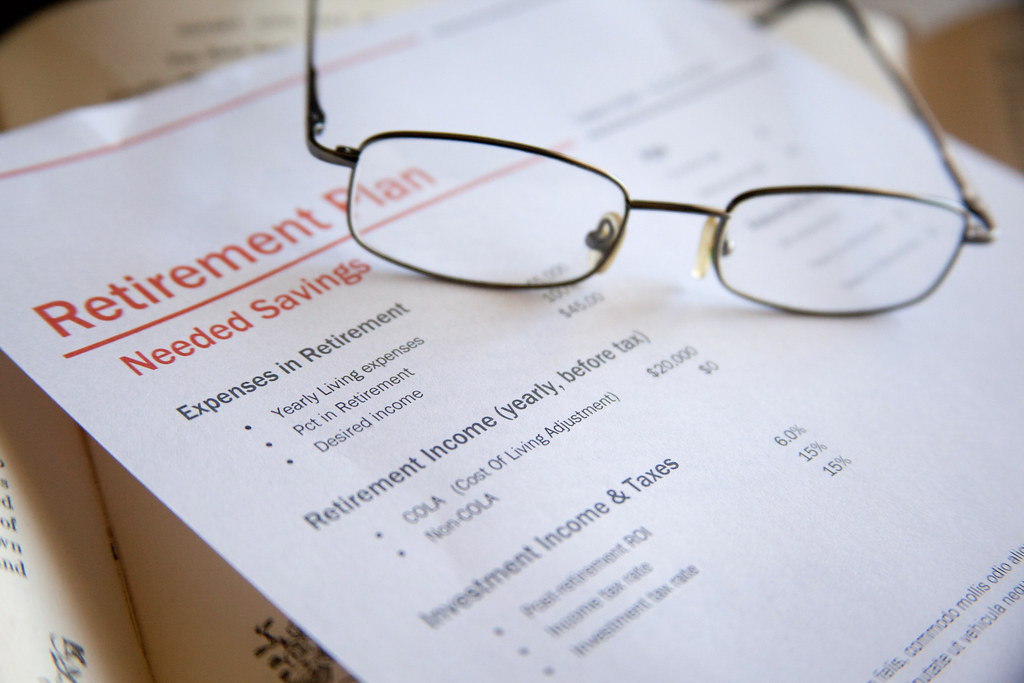
Many Americans have long envisioned retirement as a time of leisure, often associating it with the age of 65. This traditional benchmark has been deeply ingrained in the public consciousness. However, the landscape of Social Security retirement benefits is far more nuanced and dynamic than this long-held perception suggests. What was once a straightforward age for full benefits has evolved significantly. This journey began with pivotal legislative changes decades ago, and it continues to impact millions of individuals planning their golden years.
The Social Security program, designed as a vital safety net for retirees, faces complex financial challenges. These challenges are exacerbated by increased life expectancies and changing demographics. In response, Congress overhauled the program in 1983. This legislative action initiated a phased increase in the full retirement age (FRA) from 65 to 67. This long-term adjustment, though not a new concept, often catches many off guard. It underscores the critical need for comprehensive financial literacy surrounding retirement planning.
Understanding these changes is not merely an academic exercise; it directly translates into maximizing your lifelong benefits and securing your financial well-being. Navigating the intricacies of when and how to claim your Social Security benefits is one of the most significant financial decisions you’ll make. Factors such as your birth year, current health, career trajectory, and overall financial situation all play a crucial role. This in-depth guide is designed to break down these complex concepts into accessible insights. It aims to empower you with the knowledge to make informed choices. We will explore the current rules, the profound impact of claiming at different ages, and the broader context that continues to shape the future of Social Security.

1. **Defining Full Retirement Age (FRA) and its significance**At the core of Social Security retirement planning is the Full Retirement Age (FRA). This age defines when you can claim 100 percent of the benefit calculated from your lifetime earnings. It serves as the essential baseline for all other claiming decisions, whether earlier or later. Understanding your specific FRA is the fundamental first step in crafting an effective retirement income strategy.
Historically, the FRA was 65. However, a Congressional overhaul in 1983 initiated a gradual increase, phasing it up to 67. This process spanned decades. For anyone born in 1960 or later, the full retirement age is now 67. This means the traditional age of 65 no longer applies for receiving unreduced benefits for a significant portion of the workforce.
Your FRA is more than just an age for full benefits. It serves as the benchmark for calculating any reductions from early claiming, or increases from delaying. The amount you’d receive at your FRA is your “primary insurance amount.” All other benefit figures are percentages of this base. Knowing your specific FRA is crucial for accurately projecting your potential Social Security income and making informed financial decisions.

2. **The Earliest Eligibility Age: Understanding the implications of claiming at 62**Social Security offers flexibility to claim benefits as early as age 62, the earliest eligibility age. This option suits those who need or wish to start retirement income sooner. However, it comes with a critical trade-off: claiming at 62 results in a permanent reduction to your monthly payment, locked in for the rest of your retirement.
This reduction is significant, typically 25% to 30% less than your full retirement age benefit. For example, a $1,000 estimated FRA benefit could become $700-$750 at 62. This adjustment accounts for drawing benefits over a longer period, affecting the program’s overall balance. The decision weighs immediate cash flow against a higher long-term monthly sum.
Many choose to claim at 62, often due to unforeseen circumstances like forced early retirement, health issues, or a desire for more guaranteed income despite the lower amount. It’s a deeply personal choice. Crucially, once locked in, this early claim amount reduction is permanent. The percentage reduction remains, highlighting the need for a complete understanding of its long-term financial implications.
Read more about: Maximizing Your Social Security: A Comprehensive Guide to Average Benefits at Ages 62, 67, and 70

3. **Delayed Retirement Credits: How waiting past FRA can boost your benefits up to age 70**Delaying Social Security benefits past your Full Retirement Age, up to age 70, offers a substantial financial incentive through Delayed Retirement Credits. This strategy maximizes your retirement income, providing a significant boost to your financial security.
These credits increase your monthly benefit by approximately 8% per year. If your FRA is 67, waiting until age 70 could raise your benefit by about 24%. For instance, a $2,000 FRA benefit at 67 could become roughly $2,480 per month at 70. This translates to an extra $480 monthly, or $5,760 annually, a considerable sum.
This approach is ideal for those who can continue working or have other income sources to bridge the gap. It provides a permanently higher, inflation-adjusted income stream, acting as “self-insurance” against outliving savings. However, only about 4% of Americans wait until 70 to claim maximum benefits, highlighting a missed opportunity. This decision requires careful evaluation of health, financial needs, and life expectancy.

4. **The Historical Context: Tracing the evolution of the full retirement age and its rationale**Social Security’s full retirement age was traditionally 65, a widely accepted milestone. However, the system’s framework changed dramatically with the Social Security Amendments of 1983. Congress decided to gradually increase the FRA from 65 to 67. This was a response to emerging financial realities.
Lawmakers recognized a “slow leak” in the trust fund due to increasing life expectancies. In the 1950s, living into one’s mid-70s after retiring at 65 was common. Today, living into the 80s or 90s is not unusual, meaning 25-30 years of benefit collection.
This extended payout period created a fundamental financial challenge. A higher retirement age was introduced to address this “math problem” and help stabilize the program’s long-term solvency. The gradual, 33-year phase-in reflected a proactive measure to adapt to changing demographics and increased longevity.

5. **The Gradual Ascent: A detailed breakdown of FRA by birth year (1943-1960 and later)**The increase in the Full Retirement Age from 65 to 67 was a carefully phased-in process, linked to an individual’s birth year. This gradual adjustment, typically rising by two months for each successive birth cohort, aimed to give workers time to plan. Your specific FRA is a personalized benchmark.
For those born between 1943 and 1954, the FRA is 66 years. Subsequent cohorts saw incremental changes: 1955 born at 66 years and 2 months; 1956 at 66 years and 4 months; 1957 at 66 years and 6 months (FRA in 2023); 1958 at 66 years and 8 months (qualifying from September 2024); and 1959 at 66 years and 10 months (FRA in 2025).
The final increase impacts workers born in 1960 and later, for whom the full retirement age officially becomes 67. For instance, someone born in January 1960 must wait until January 2027 for full benefits. This marks a complete shift from the traditional 65 for unreduced benefits. Precision in calculation extends to birthdays: being born on the 1st of a month means your benefit is calculated as if your birthday was in the previous month, affecting eligibility timelines.

6. **The Immediate Financial Impact: Comparing benefit reductions for early claiming versus full benefits**
The decision of when to claim Social Security benefits carries substantial and immediate financial consequences. The choice between retiring early and waiting for your Full Retirement Age can profoundly impact your financial stability throughout retirement. This permanent shift in your baseline income demands careful consideration.
Social Security Administration figures highlight this impact. For 2024, the maximum monthly benefit at FRA was $3,822. Claiming at 62, however, yielded a maximum of $2,710. This $1,100+ per month difference underscores the significant financial trade-off for early claiming. Your benefit is reduced by a small percentage for each month before your FRA.
The magnitude of reduction is clear through examples. For those born 1943-1954 (FRA 66), claiming at 62 (48 months early) reduces an estimated $1,000 benefit to $750 (25.00% reduction). For those born 1960 or later (FRA 67, 60 months early), that same $1,000 benefit would be $700 (30.00% reduction). These are critical differences impacting lifelong income.
These reductions also apply to spousal benefits, capped at 50% of the worker’s FRA benefit. An early claiming spouse sees a permanent reduction. For example, a $500 spouse’s benefit for someone born 1943-1954 would reduce to $350 (30.00% reduction). For those born 1960 or later, it would be $325 (35.00% decrease). These percentages underscore widespread implications for household income.

7. **The 67-Year FRA: Implications for Younger Generations’ Retirement Readiness**The Full Retirement Age (FRA) of 67 is now a reality for anyone born in 1960 or later, a direct result of 1983 legislation. This means the traditional notion of full retirement at 65 is definitively past for younger baby boomers and Gen Xers. Understanding this precise age is crucial for accurate financial projections and effective retirement planning.
This shift profoundly impacts these generations’ retirement preparedness. Research shows younger boomers (born 1959-1965) and Gen Xers (1965-1980) are among the least prepared, often lacking adequate savings. Consequently, many anticipate heavy reliance on Social Security benefits for their golden years.
However, Social Security benefits are designed to replace only about 40% of working income. For instance, roughly one-third of younger boomers expect Social Security to cover at least 90% of their retirement income, creating a significant gap. This makes navigating the 67-year FRA and its implications an urgent financial endeavor for these generations, demanding meticulous planning given their current savings shortfalls.

8. **Coordinating Social Security with Medicare: The Critical Age 65 Milestone**While Social Security’s Full Retirement Age garners much attention, Medicare eligibility operates on a separate, equally vital timeline. Regardless of your Social Security FRA, eligibility for Medicare—federal health insurance for those 65 or older—typically begins at age 65. This distinct milestone demands careful coordination to avoid health coverage gaps and financial penalties.
The federal government strongly advises applying for Medicare benefits within three months of your 65th birthday. This ensures seamless coverage for medical insurance (Part B) and prescription drug coverage (Part D). Even if you delay Social Security benefits until your FRA or age 70, initiating Medicare enrollment at 65 secures your health care safety net.
Failing to enroll during this initial period can lead to significant, permanent financial repercussions. Postponing Part B and Part D sign-up may permanently cost you more through higher lifetime premiums, substantially eroding your retirement budget. Therefore, a comprehensive retirement strategy must integrate both Social Security claiming decisions and Medicare enrollment for financial security and health.

9. **Underlying Financial Pressures and Renewed Focus on Retirement Age**Discussions surrounding Social Security’s retirement age stem from persistent, escalating financial pressures. Congress initiated the gradual FRA increase in 1983, recognizing a “slow leak” in the system. This has grown into a significant funding shortfall, projected in the 2030s, necessitating ongoing program adjustments.
Primary drivers include shifting demographics and increased longevity. Americans are living longer, collecting benefits for extended periods. When Social Security began, life expectancies were shorter, making a 65-year retirement age more sustainable. Today, 25-30+ years of benefit collection strains the system considerably.
Compounding longevity is a changing worker-to-beneficiary ratio. Fewer workers now pay into the system relative to growing retiree numbers, creating a fundamental “math problem.” Policymakers view FRA increases as a tool for long-term solvency, reducing future benefit payouts without immediate cuts for current retirees, a familiar and successfully implemented approach.
Read more about: The Shifting Landscape of Love and Life: Unpacking the ‘Why’ Behind the Surge in Gray Divorce Among Older Adults

10. **Exploring Potential Future Adjustments to FRA and Terminology**While the current Full Retirement Age (FRA) is 67 for those born in 1960 or later, debates about future adjustments persist. No new law has passed, but various proposals circulate in legislative circles. These efforts aim to ensure Social Security’s long-term viability without impacting current retirees or those near claiming benefits.
One common option is a gradual FRA increase from 67 to 68 or 69 over many years, mirroring the 1980s approach. New birth cohorts might see FRA rise by two or three months, primarily affecting those far from retirement. The earliest eligibility age (62) would likely remain, but early claiming reductions would increase.
Beyond age, there’s a push to simplify complex terminology. The “Claiming Age Clarity Act” proposes renaming “early eligibility age” to “minimum benefit age” (62), “full retirement age” to “standard benefit age” (FRA), and “delayed retirement age” to “maximum benefit age” (70). These changes aim for clearer communication, helping individuals understand their claiming choices’ lasting impact.
Read more about: The Viola: Exploring the Profound Resonance and Evolving Legacy of the Violin Family’s Middle Voice

11. **The Equity Challenge: Disproportionate Impact of a Higher FRA**Proposals for raising the Full Retirement Age spark significant debate on equity and fairness. Critics argue that increasing the retirement age, while addressing systemic financial issues, does not impact all Americans equally. The assumption of longer life expectancies overlooks nuanced realities across different population segments.
One key concern is the disproportionate effect on individuals in physically demanding occupations. Workers in fields like construction, manufacturing, or healthcare support often perform strenuous labor, making working into their late 60s or 70 physically untenable. A higher FRA forces them to either work in discomfort or claim reduced benefits earlier, with permanent financial consequences.
Furthermore, raising the FRA impacts lower-income workers more acutely. Statistical data shows these populations often have shorter life expectancies than their higher-income counterparts. If the FRA increases, they would collect benefits for fewer years, reducing total lifetime benefits and exacerbating wealth disparities. This highlights the critical need for a balanced approach considering all workers’ varied capacities and realities.
Read more about: Navigating the Future of Road Funding: An In-Depth Look at the Controversial Per-Mile Charge Proposal

12. **Proactive Planning: Essential Tools and Strategies for Future Retirees**Given Social Security’s evolving landscape and ongoing discussions about its future, proactive planning is crucial. Regardless of whether further legislative changes occur, individuals must equip themselves with knowledge and tools to make informed retirement decisions. This empowers them to adapt to potential policy shifts and maximize their financial security.
One powerful tool is creating a personal “my Social Security” account on the official SSA website. This free, secure portal allows you to estimate benefits at various claiming ages (62, your FRA, 70), review earnings records, and see how early or delayed retirement impacts your check. These personalized projections are invaluable for building a realistic retirement income strategy.
Beyond Social Security, building robust personal retirement savings is paramount. Consistent contributions to 401(k)s, IRAs, or other investment vehicles provide a crucial buffer and flexibility. Strong personal savings can offset potential future Social Security reductions or provide income when delaying claiming for higher payouts is advantageous. Individuals should also realistically assess their health and career trajectory, staying informed about legislative developments.
Finally, coordinate Social Security planning with Medicare eligibility. Medicare typically begins at 65, independent of your Social Security FRA. Applying for Medicare within three months of your 65th birthday is essential to avoid penalties and ensure continuous health coverage. By leveraging these tools and embracing proactive planning, you can navigate retirement complexities and secure your financial future effectively.
The journey toward retirement is unique for every individual, shaped by personal circumstances, career paths, and financial goals. In an era where Social Security rules are continually refined and debated, taking ownership of your financial literacy is not just beneficial—it’s essential. The choices you make today regarding when and how you claim your Social Security benefits, combined with diligent personal savings and careful planning, will profoundly dictate the quality of your golden years. Empower yourself with knowledge and proactive action; don’t leave your retirement to chance.



